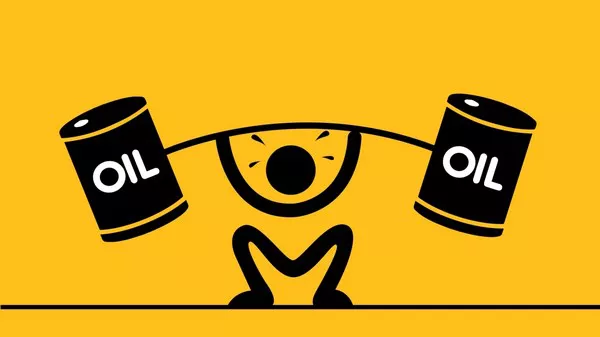In the realm of commodities trading, oil stands as a cornerstone, its fluctuations impacting global economies and financial markets. For traders engaging in oil futures, strategic timing can be paramount, dictating profitability amidst the volatility of this market. Understanding the optimal hours for trading oil futures is crucial for informed decision-making and maximizing returns. This article explores the dynamics of oil futures trading and unveils the best hours to navigate this intricate market landscape.
The Dynamics of Oil Futures Trading
Oil futures provide traders with the opportunity to speculate on the future price movements of crude oil. These derivative contracts enable participants to buy or sell oil at a predetermined price on a specified future date. The prices of oil futures are influenced by a myriad of factors, including supply and demand dynamics, geopolitical tensions, macroeconomic indicators, and market sentiment.
Given the global nature of oil markets, trading occurs around the clock, spanning different time zones and regions. This continuous trading cycle presents both opportunities and challenges for traders seeking to capitalize on price movements. Understanding the patterns of market activity and liquidity is essential for devising effective trading strategies.
Key Factors Influencing Trading Hours
Several factors contribute to the fluctuating levels of activity and liquidity in oil futures markets throughout the day. These factors include:
Market Openings and Closures: The opening and closing times of major oil futures exchanges, such as the New York Mercantile Exchange (NYMEX) and the Intercontinental Exchange (ICE), influence trading volumes and volatility. As different regions enter and exit trading hours, shifts in liquidity and price movements can occur.
Economic Releases: Scheduled releases of economic data, such as inventory reports from the Energy Information Administration (EIA) and the American Petroleum Institute (API), can significantly impact oil prices. Traders often anticipate these releases and adjust their positions accordingly, leading to heightened activity during specific hours.
Geopolitical Events: Geopolitical tensions, conflicts, and geopolitical announcements can trigger sudden price fluctuations in oil markets. News related to production cuts, sanctions, or diplomatic developments can prompt significant market reactions, attracting traders to participate during volatile periods.
Overlapping Trading Sessions: During periods of overlap between different trading sessions, such as the European and U.S. sessions, trading activity tends to peak. Increased participation from market participants across multiple regions can enhance liquidity and lead to greater price volatility.
Determining the Best Hours to Trade Oil Futures
While oil futures trading occurs round-the-clock, certain hours exhibit heightened activity and offer greater opportunities for traders. By aligning with these optimal trading hours, traders can enhance their chances of executing profitable trades. The following are key timeframes to consider when trading oil futures:
The U.S. Trading Session (8:00 a.m. – 5:00 p.m. Eastern Time): The U.S. trading session coincides with the operating hours of major exchanges such as the NYMEX. During this period, trading activity in oil futures typically peaks, driven by market participants in North America. Economic releases, such as the weekly EIA petroleum status report released on Wednesdays, often contribute to heightened volatility during this session.
The European Trading Session (2:00 a.m. – 11:00 a.m. Greenwich Mean Time): The European trading session overlaps with the Asian and U.S. sessions, creating a period of increased market activity. European traders, along with participants from the Middle East and Africa, contribute to liquidity during these hours. Economic data releases from Europe, as well as geopolitical developments in the Middle East, can influence price movements during this session.
The Asian Trading Session (11:00 p.m. – 8:00 a.m. Greenwich Mean Time): While trading activity in oil futures is relatively subdued during the Asian session, certain events can spark volatility. News releases from major oil-producing countries in the Middle East, such as Saudi Arabia and Iran, can impact prices during these hours. Additionally, developments in Asian economies, such as China and Japan, may influence oil demand expectations.
Overlapping Sessions: The overlap between the U.S. and European sessions (1:00 p.m. – 5:00 p.m. Greenwich Mean Time) often witnesses heightened trading activity and volatility. This period, sometimes referred to as the “power hours,” attracts traders seeking to capitalize on increased liquidity and price movements resulting from the convergence of market participants from both regions.
Strategies for Trading Oil Futures Effectively
In addition to identifying optimal trading hours, employing effective trading strategies is essential for success in oil futures markets. Some strategies to consider include:
Technical Analysis: Utilizing technical indicators and chart patterns to identify potential entry and exit points based on historical price data and market trends.
Fundamental Analysis: Analyzing supply and demand fundamentals, geopolitical developments, and macroeconomic indicators to anticipate future price movements.
Risk Management: Implementing risk management techniques such as stop-loss orders and position sizing to mitigate potential losses and protect capital.
Monitoring News Events: Staying informed about relevant news events and economic releases that could impact oil prices and adjusting trading strategies accordingly.
Conclusion
Trading oil futures presents lucrative opportunities for investors seeking exposure to one of the world’s most important commodities. By understanding the dynamics of oil markets and identifying the optimal hours for trading, investors can enhance their chances of success and capitalize on price movements. Leveraging effective trading strategies and risk management techniques is essential for navigating the complexities of oil futures trading and maximizing returns in this dynamic market environment.


